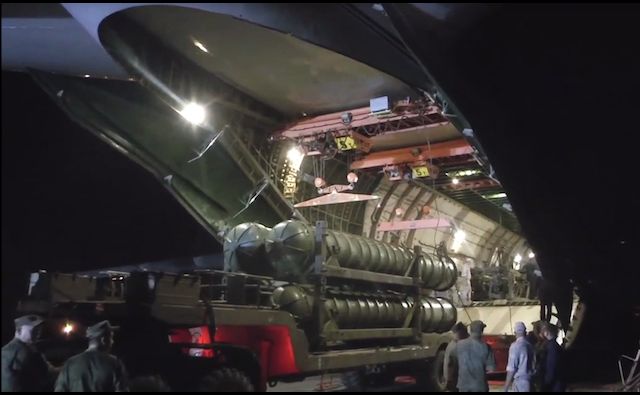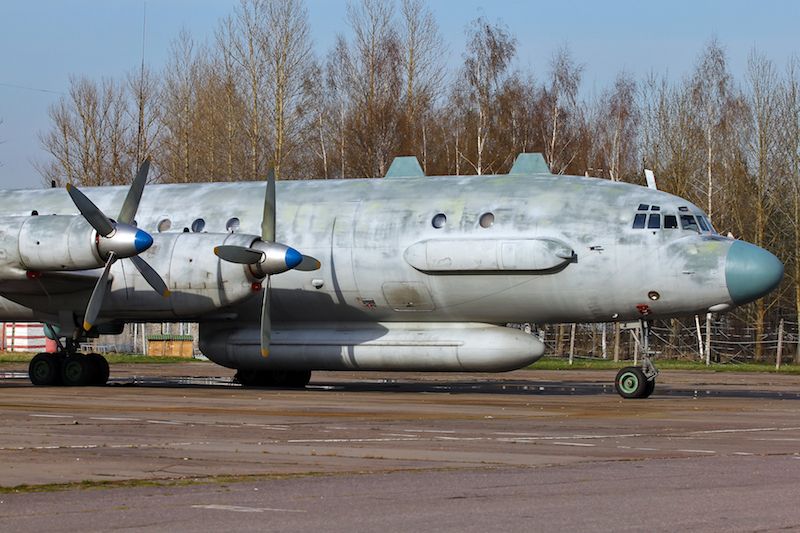Iran and Israel’s proxy war in Syria escalates
The accidental downing of a Russian military plane by Syrian anti-missile defense, which coincided with Israeli air force jets’ presence in the area, highlights the danger of the open proxy conflict between Israel and Iran. The number of parties involved points to the risk of the Syrian conflict exploding into a full-fledged regional war.

In a nutshell
- Iran is advancing its ideological goal of Israel’s destruction by expanding its own and proxy forces in Syria
- Israel responds by attacking them and destroying Iranian missiles on delivery to Lebanon via a route across Syria
- As the conflict intensifies, the two countries are finding themselves ever closer to an open, all-out war
The downing of a Russian plane by Syrian anti-missile defenses on September 17, 2018, led to an unprecedented crisis between Israel and Russia. Moscow blames Israel for the mix-up, turning a blind eye to the shortcomings of its Syrian ally in a bid to deflect criticism at home over the costs of the intervention in Syria and the unreliability of Syrian teams handling sophisticated Russian equipment.
The target attacked by Israeli Air Force F-16s was a site near Latakia, where Iran’s equipment for upgrading missiles was in transit to Hezbollah in Lebanon. The incident highlights the danger of the proxy war between Israel and Iran as part of a larger conflict. The number of parties involved – Israel, Russia, Syria, Iran and Hezbollah – points to the risk of the protracted Syrian conflict exploding into an all-out regional war.
It is still unclear whether the September incident will limit Israel’s ability to target Iranian installations in Syria and destroy convoys carrying Iranian precision-guided missiles across that country. For its part, Israel has reiterated that it would not be deterred from a task that it considers critical for its security.
It started with Khomeini
Previously excellent relations between Israel and Iran ended abruptly in early 1979, when Ayatollah Ruhollah Khomeini (1979-1989) ousted the regime of Shah Mohammad Reza Pahlavi (1941-1979) in Iran. The new regime established a Shia religious system and mapped a long-term strategy to bring about an Islamic revolution. The first step would be setting up a “Shia crescent” – a network of allies strung across the heart of the Middle East. Israel, dubbed “Little Satan” (the United States is the Great Satan), was to be destroyed.
In August of 1979, Ayatollah Khomeini instituted an “international Islamic solidarity day for Al-Quds” (Jerusalem’s Arabic name) to be marked each year on the third Friday of the month of Ramadan; the faithful are urged to see the deliverance of Jerusalem as a religious obligation. The destruction of Israel had become the central goal of the country’s policy and a mantra repeated ever since by rulers and army commanders. Iran has never been taken to task for this by the international community.
Iran’s move was the first step toward developing a nuclear weapon – a clear and present danger for Israel.
While bolstering their regime, the ayatollahs set in motion two parallel anti-Israel strategies: attrition through Arab terror organizations and creating Iran’s independent nuclear capability. The latter became evident toward the end of the 20th century when Iran was caught (by Israel and other members of the international community) secretly trying to develop its own cycle of nuclear fuel, independently enriching uranium and producing plutonium.
That was in clear violation of the Non-Proliferation Treaty and the rules enforced by the International Atomic Energy Agency in Vienna. Countries not recognized as nuclear powers, such as Iran, are allowed to purchase low-grade uranium only for nonmilitary uses like electricity generation or nuclear medicine. Under the rules, nuclear waste from these ventures must be returned to the seller of the uranium – precisely to prevent its reuse for making plutonium.
Tehran’s secret move was the first step toward developing a nuclear weapon – a clear and present danger for Israel. Its government began trying to persuade international public opinion while acting through diplomatic channels. Israel even hinted that, as a last resort, it would attack Iran’s nuclear facilities. According to foreign sources, Israel sabotaged some of these facilities and may have targeted Iranian atomic physicists.
Temporary patch
Only in 2015, under the leadership of U.S. President Barack Obama, did the five permanent members of the United Nations Security Council and Germany (P5+1) conclude with Iran the Joint Comprehensive Plan of Action (JCPOA) limiting the enrichment of uranium and stopping all plutonium production by that country – but only for a period of 10 years. Afterward, Tehran would be free to resume enriching uranium and officially become a pre-nuclear state.
Israel strenuously opposed the deal, which, in addition to other drawbacks, made no provision for halting the development of long-range ballistic missiles with nuclear weapon delivery capabilities. Furthermore, the issue of Iran’s subversive activities in the region was not addressed.
In May 2018, U.S. President Donald Trump announced he was withdrawing from the JCPOA and proposed negotiating a new, more comprehensive agreement with Iran. The Trump administration also imposed economic sanctions on Iran in the hope of pressing Tehran into bargaining.
However, many European Union countries, as well as China and Russia decided to stand by the original deal. French President Emmanuel Macron even stated that allowing Iranian oil exports to continue against the U.S. policy would further peace. The EU’s High Representative for Foreign Affairs Federica Mogherini went so far as to suggest that the EU should create a special payment mechanism to enable countries trading with Iran to bypass American sanctions. To this, White House National Security Advisor John Bolton replied that the U.S. would be “aggressive and unwavering” in imposing sanctions, and added, “We do not intend to allow our sanctions to be evaded by Europe or anyone else.”
So far, the EU has not even asked the International Atomic Energy Agency to check the place.
In his speech to the General Assembly on Sept. 27, 2018, Israeli Prime Minister Benjamin Netanyahu revealed the existence of a warehouse where Iran hid much of the equipment and radioactive material from its nuclear weapons program. So far, the EU has not even asked the International Atomic Energy Agency to check the place. Israel monitors the situation closely since Tehran might restart its uranium enrichment program anytime now.
Proxy forces
Until recently, Iran has conducted its drive to eradicate Israel through proxies. It set up Hezbollah in Lebanon in 1982 as a direct threat to the Jewish state and to promote its agenda in the region. The movement has been financed, trained and armed by the Iranians. Hezbollah now has many thousands of missiles stationed near Israel’s northern border. Its attacks on Israel led to two wars. Iran also ordered the organization to send its fighters to Syria to help the regime of President Bashar al-Assad.
Iran supplied Hamas and other Palestinian organizations fighting Israel with weapons, missiles and explosives smuggled through Sudan and Egypt to the Gaza strip. This route has now been sealed off after Israel repeatedly bombed convoys and weapons assembly shops in Sudan.
Of late, Iran has deepened its involvement in the Syrian civil war, dispatching soldiers and officers from the Islamic Revolutionary Guards Corps elite regiments led by Major General Qassem Soleimani. Together with Hezbollah fighters, they attempted to set up bases near the border on the Golan Heights to harass Israel with terror operations and missile attacks. The Israelis responded with a series of counterattacks. After a high-ranking Iranian officer was killed, Iran dropped that specific endeavor. Israel has since stated that no Iranian presence would be tolerated on the Golan, as it would constitute a vital threat to the nation’s security.
Nonetheless, Tehran is too heavily invested in Syria to withdraw. According to the British Broadcasting Corporation (BBC), as much as $36 billion in Iran’s money was poured into bolstering the Syrian government forces and its economy for the first six years of the civil war. Special UN envoy Staffan de Mistura has confirmed the estimate. Bordering Lebanon, Iraq, Jordan, Israel and Turkey, Syria is essential for Iran’s long-range plan of setting up a “Shia crescent” from Iran all the way to the Mediterranean. The war-torn country has become the nexus of Iranian activity against Israel and Sunni states.
This explains why Hezbollah was ordered in 2015 to come to the rescue of Mr. Assad’s failing army and why Iran has set up militias with Shia fighters from Iraq, Afghanistan and Pakistan to further its aims in Iraq and Syria. Those fighters were told they would be relocated to Syria after the war and given land free of charge.
This de facto new army was formed as an alternative to sending many Iranian soldiers into Syria; the newcomers are also supposed to increase the percentage of Shias in the population and ensure the smooth transit of military and economic assistance from Tehran to Beirut. Eventually, they could constitute a ground force to attack Israel, solving the problem of the shortage of Iranian troops in the lands between Iran and the targeted country.
Increasing pressure
With this goal in mind, a vast military Iranian network is emerging in Syria: army camps for the militias, stockpiles of weapons and ammunition, plants for developing and manufacturing precision-guided missiles and guided drones to be used against Israel. Rockets are still transiting through Syria on their way to Hezbollah in Lebanon. Facing this massive buildup, Israel repeatedly warned that it would not tolerate any Iranian presence in Syria. The Israeli Air Force has bombed Iranian targets and missile-carrying convoys to Hezbollah more than 200 times in recent months.
Netanyahu met several times with the Russian president to secure his understanding.
Russian warplanes relentlessly pounding opposition forces have turned the tide of the war and secured the Assad regime, but their presence was hampering Israel’s efforts. Israel had to convince Moscow that it was acting in self-defense and coordinating its operations in real time with the Russian military command in Syria. Mr. Netanyahu met several times with the Russian president to secure his understanding. A coordination process was established. It worked well until the September 17 incident. Mr. Putin, though, was reluctant to pressure Iran, with which he shares the goal of maintaining President Assad in power.
The U.S., which backs the opposition forces in Syria (now mainly to be found near the Syrian-Jordanian border) and is a staunch ally of the Hashemite kingdom, did convince the Russians to support the demand that the Iranian forces reposition themselves at least 80 kilometers away from the borders of Jordan and Israel. That understanding was never fully implemented, because the Syrian forces regained control of the Golan with the help of Russian bombing raids. The militias did withdraw to the prescribed distance, but Iranian and Hezbollah intelligence personnel were stationed in Syrian lookouts on the Israeli border. They are currently working on a new terror network to fire at Israeli patrols, lob missiles into the Galilee region and even penetrate civilian villages. Hezbollah would thus be able to operate from Syria, lessening the risk of Israeli retaliation in Lebanon.
Tit-for-tat sequence
For many months, Israel kept attacking Iranian targets in Syria without taking responsibility for them to spare President Assad loss of face. This situation was about to change between February and May 2018, when Iran responded twice to Israeli air attacks on the T-4 airbase, a center of Iranian activity in Syria. It launched a drone laden with explosives and fired 20 missiles into Israel. Both attacks failed, but Israel responded forcefully by hitting more than 50 Iranian installations, diminishing Iranian military potential in Syria. A former head of Israeli Military Intelligence, General Amos Yadlin, said at that point that Israel and Iran were in direct confrontation.
The deadly game goes on. On Aug. 31, 2018, Reuters reported that Iran had transferred ballistic missiles and missile factories to Iraq, handing them over to Shia militias under its control. Tehran hopes they would be less vulnerable to Israeli attacks there. The U.S. condemned the move as violating Iraq’s sovereignty while Israel’s minister of defense let it be known that Israel did not limit itself to raids on Syria alone.

Scenarios
The aftermath of the Sept. 17 incident is still being felt. The Russian Minister of Defense Sergei Shoigu is loath to admit that Russian-trained Syrian personnel fired Russian missiles at a Russian Il-20 reconnaissance aircraft and caused the death of 15 Russian servicemen several minutes after four Israeli F-16s involved in the incident had withdrawn from the area. Mr. Putin did admit that the plane had been lost “due to an unfortunate set of circumstances,” yet backed his minister’s critique of the Israeli air force’s role in the accident. Prime Minister Netanyahu called President Putin for the second time, conveyed his condolences and dispatched an Israeli air force commander to demonstrate to his Russian counterpart what had transpired. All to no avail: Russia made good on its threat to deliver advanced anti-missile system S300 to Syria. It also signaled implementing other measures “to defend its forces.” Israel tersely replied that it would not be deterred from acting to prevent Iran from entrenching itself in Syria and sending more missiles to Hezbollah.
Will brinkmanship be henceforth the name of the game? The protracted conflict imposed on Israel by Iran’s implacable enmity has turned into an open military confrontation, albeit not from bases within Iranian territory. To further their grand scenario the ayatollahs are diverting resources they no longer have and braving public demonstrations at home of Iranians calling on them for investing in citizens’ welfare instead of warfare. Are they ready, however, to go for an all-out confrontation with the Little Satan? On balance, it does not seem likely.
Israel has blocked most – but not all – convoys bringing precise missiles to Hezbollah. The terror organization is in possession of about 150,000 missiles in Lebanon, but most of them are antiquated, hence Iran’s efforts to upgrade the arsenal. The group is keen to go to war but has to contend with the Lebanese, who are aware that Israel would obliterate their country should it be attacked.
Russia does not want a new war in the Middle East. It is still striving to further its interests in Syria and achieve peace on its terms. Neither does the Syrian president believe that the time is ripe for such a war: his country is ruined and continues to be tormented by domestic conflict.
The international community, for its part, would strongly condemn an open war against Israel, and the U.S. would most probably intervene on the side of its ally.
As to the Jewish state, it does not want war. It will continue to chip away at the Iranians’ buildup in Syria while trying to avoid getting entangled in the broader hostilities there. The September incident was alarming in this respect, but there are signs that both Jerusalem and Moscow are now looking at ways to ensure better coordination of their military activities.
So how realistic are the prospects of a conflagration? One or another of the parties involved could accidentally trigger a chain of events leading to a confrontation no one wants. As the U.S sanctions on Iran are beginning to bite and more restless Iranians are taking to the streets, though, the ayatollahs may be too preoccupied at home to plunge into direct confrontation with the Israeli military machine.
Finally, Israel would initiate an attack only when convinced that it had no other option. For now, Iran has not restarted its uranium-enriching project and is keeping to the terms of the 2015 nuclear agreement – in the hope that the EU will help it circumvent the sanctions, and perhaps that the next U.S. presidential elections would install a different figure in the White House.
But as the scorpion told the frog in the old joke, we are in the Middle East.








